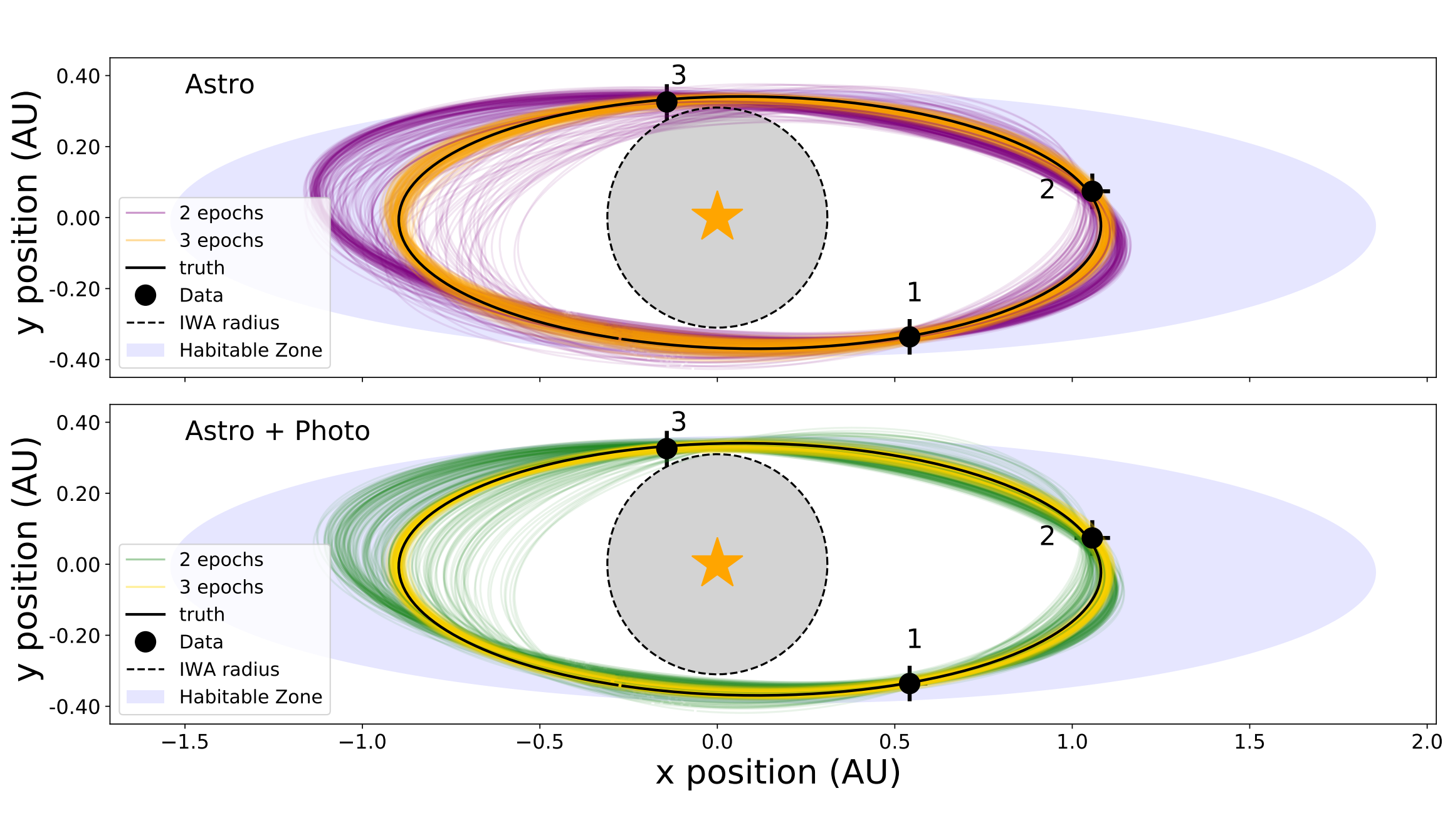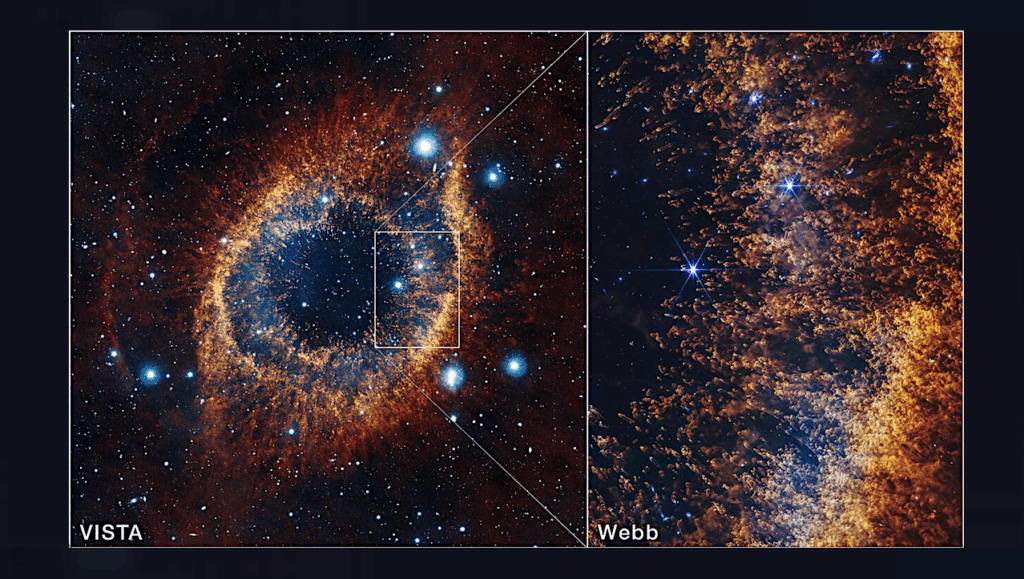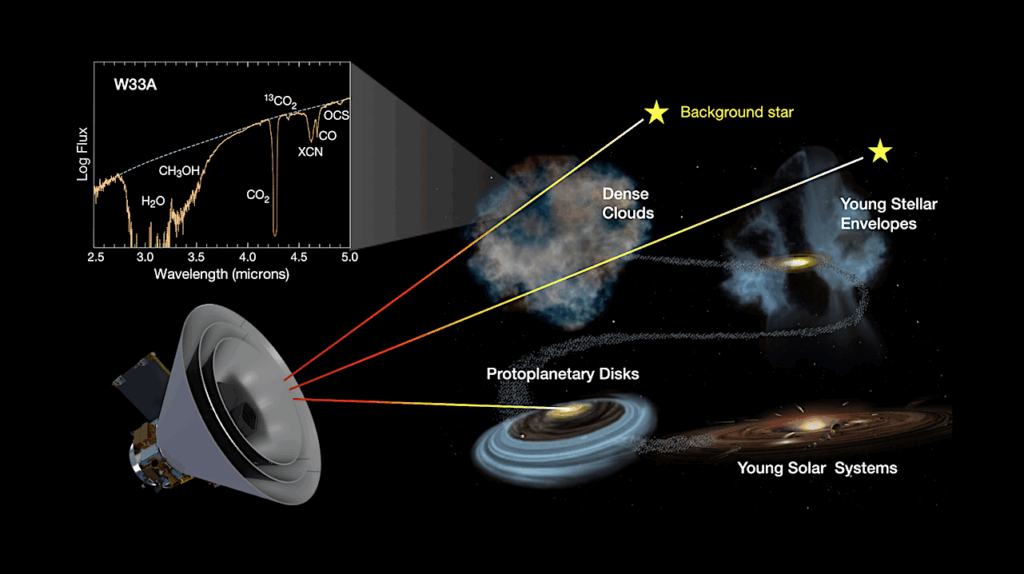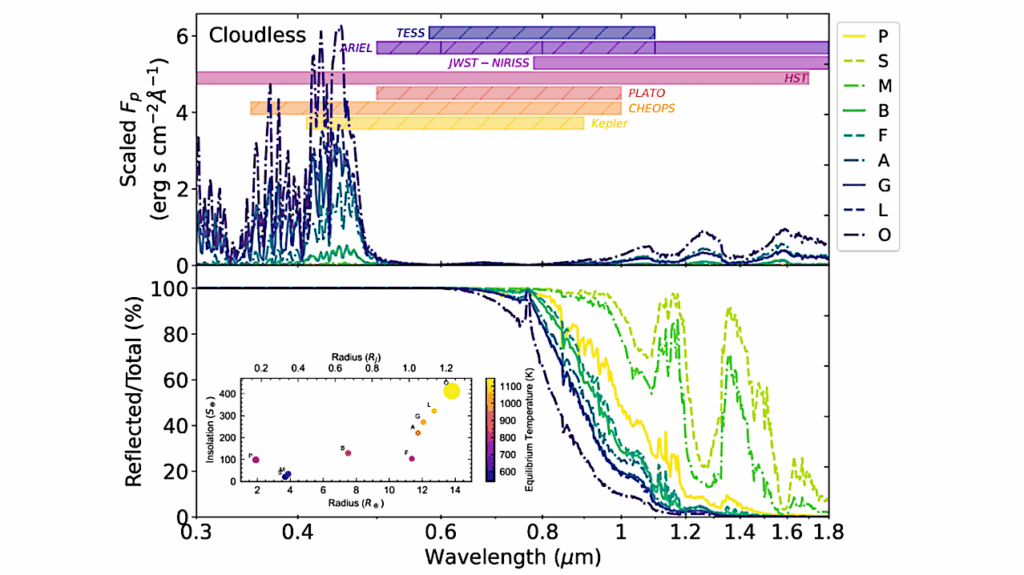Combining Photometry and Astrometry to Improve Orbit Retrieval of Directly Imaged Exoplanets

Future missions like Roman, HabEx, and LUVOIR will directly image exoplanets in reflected light. While current near infrared direct imaging searches are only sensitive to young, self-luminous planets whose brightness is independent of their orbital phase, reflected light imaging will reveal changes in planet brightness over the course of an orbit due to phase variations.
One of the first objectives will be determining the planet’s orbit via astrometry, the projected position of the planet with respect to its host star in the sky plane. We show that phase variations can significantly improve the accuracy and precision of orbital retrieval with two or three direct images. This would speed up the classification of exoplanets and improve the efficiency of subsequent spectroscopic characterization.
We develop a forward model to generate synthetic observations of the two dimensional position of the planet with respect to its host star on the sky plane, and the planet/star flux ratio. Synthetic data are fitted with Keplerian orbits and Henyey-Greenstein phase variations to retrieve orbital and phase parameters. For astrometric uncertainties of 0.01 AU in projected separation and flux ratio uncertainties of 10^-12, using photometry in orbit retrieval improves the accuracy of semi-major axis by 47% for two epochs and 61% for three epochs if the phase curves have a known shape, but unknown amplitude.
In the more realistic scenario where the shape and amplitude of the phase curve are a priori unknown, photometry still improves accuracy by 16% for two epochs and 50% for three.
Margaret Bruna, Nicolas B. Cowan, Julia Sheffler, Hal M. Haggard, Audrey Bourdon, Mathilde Mâlin
Comments: 10 pages, 6 figures. Submitted to the Monthly Notices of the Royal Astronomical Society on August 9, 2022
Subjects: Earth and Planetary Astrophysics (astro-ph.EP); Instrumentation and Methods for Astrophysics (astro-ph.IM)
Cite as: arXiv:2208.08447 [astro-ph.EP] (or arXiv:2208.08447v1 [astro-ph.EP] for this version)
https://doi.org/10.48550/arXiv.2208.08447
Focus to learn more
Submission history
From: Margaret Bruna
[v1] Wed, 17 Aug 2022 18:00:01 UTC (1,577 KB)
Full Paper https://arxiv.org/abs/2208.08447
Astrobiology,








